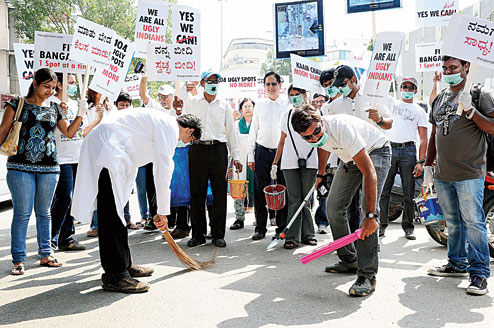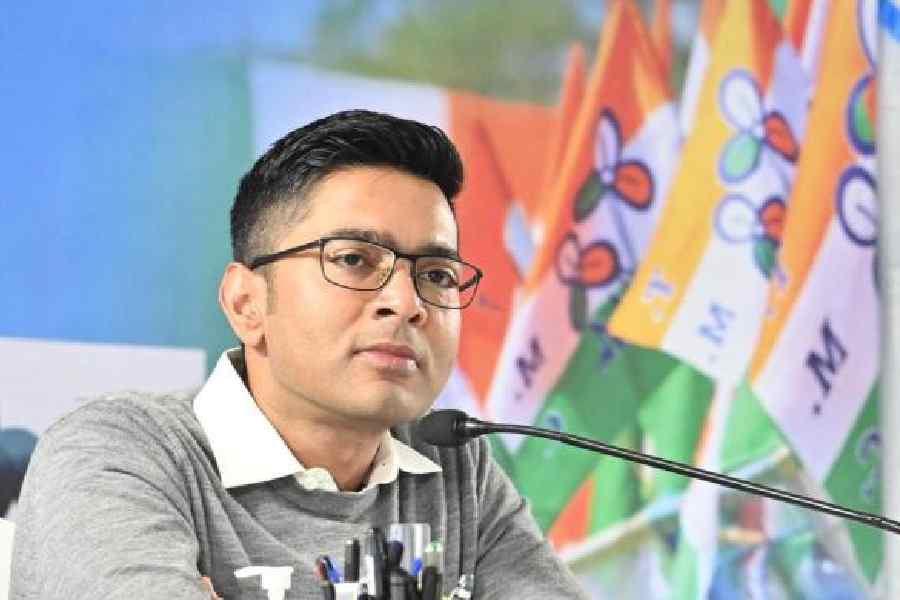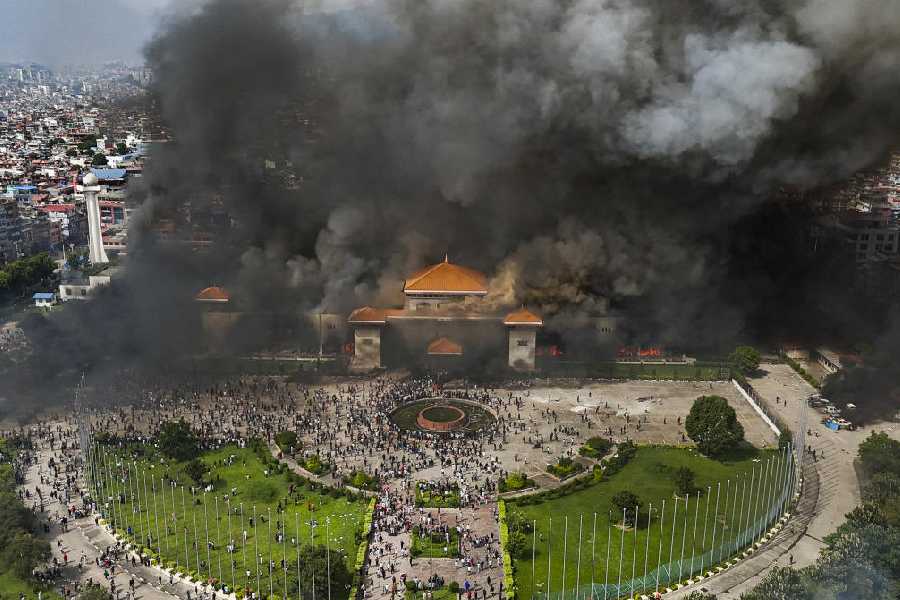 |
| Clean up: Concerned Bangaloreans do their bit for the city |
As Karnataka goes to the polls on Sunday, the Bangalore Political Action Committee (B.PAC) has been all over the airwaves. B.PAC has taken upon itself to endorse 14 candidates across parties on the parameters of education, public service, crime-free record and commitment to their work. “We want to get rid of caste-religion votes,” says managing trustee Kiran Mazumdar-Shaw, chairperson of Biocon. “We want to be the conscience-keeper of the government,” she says.
But it’s not just putting its stamp of approval on candidates who may deliver better governance. The B.PAC, an association of eminent citizens from industry, art, sports, theatre and self-help groups, has also got voter registration up by 4,00,000 in the last few months. “Only three per cent of the 30 per cent urban voters vote. B.PAC has pushed up voter registration by joining hands with organisations like Smart Vote, and going into IT hubs, college campuses and residential areas,” says Mazumdar-Shaw in her office at Bangalore’s Electronic City.
Such citizen initiatives are not unusual in Bangalore. The city’s meteoric rise as an IT hub, with its population almost doubling in just a decade — it stands at over 90 lakh now — has led to an array of civic woes. “It’s awful — the garbage, the sewage system, there is no water, bad roads, poor safety, no streetlights,” says Mazumdar-Shaw.
On the plus side, though, a plethora of citizens’ groups, often helped by captains of industry and other prominent locals, have emerged and are taking an active role in grappling with the problems and coming up with solutions.
Recently, a citizens’ group called Forward-150, comprising 30 residents’ welfare associations in Bellandur ward, was able to save the Kaikondrahalli lake from the local corporator’s efforts to widen the road towards the lake side. Residents have now formed a trust to maintain the 47-acre lake.
Also working for a better quality of city life are organisations such as Daksh, Janaagraha, City Connect, Solid Waste Management Round Table and, in the long list, an interesting organisation called The Ugly Indian, which believes in cleaning up the city’s public spaces anonymously, usually with their face covered. Their philosophy: Kaam chalu, mooh bandh. (Stop talking, start doing).
It was also a citizens’ agitation that highlighted the dramatic image of Bangalore sitting amidst a pile of rotting garbage last year. The residents of Mavallipura and 15 other villages on the northern outskirts of Bangalore which were being used as illegal landfills, decided that they had had enough. Among the petitioners who went to court against the Bangalore municipal corporation’s irresponsible dumping of garbage was the Environment Support Group (ESG), yet another citizens’ action group.
“It is a case of neglecting peri-urban areas. The good thing is there is a sensibility in urban Bangalore that realises that you cannot just make illegal landfills. The high court too has been very good at setting up a system for proper waste management in the city. They have identified hotels, malls, industries, commercial and residential areas, hospitals as producers of waste and made them accountable. Corporators and ward committee members have also been made responsible for garbage removal,” says Leo Saldanha, founder of ESG.
As we drive out of the courthouse, after the garbage hearing, towards Seshadaripuram Road, Saldanha says the area has lost 380 trees — “some with canopies half an acre wide” — thanks largely to thoughtless road widening carried out by the civic authorities.
ESG also went to court and got a stay order against felling trees for road widening and urban planning. “We have saved around 50,000 trees on 216 roads through our petitions. Otherwise the city would have looked like a ghost town,” says Saldanha.
Even the legendary 300-acre Cubbon Park, the green lung of Bangalore, has seen encroachment attempts by legislators who wanted to build apartments there. A huge public outcry thwarted that move.
“A curious thing about Bangalore is that it is not built around a natural feature. All its lakes are manmade. It is also not a stackhouse city. We did not have a history of blue-collar mill workers (as in Mumbai), or a sarkari culture (as in Delhi) or a zamindari culture (Calcutta),” says Naresh Narasimhan, an architect who was a member of the Bangalore Action Task Force (BATF) — the precursor of the B.PAC. “Much of the wealth created in the city is self-made and many of the attempts to engage with the city come from guys who made it big. The city was built by first-generation entrepreneurs who have given back to the city,” he adds.
The BATF was a private-public-partnership (PPP) with the government launched under former chief minister S.M. Krishna. “The private sector wanted a credible vehicle for city planning at a time when urban poverty was not even recognised. For the first time the government got engaged with citizens through transparent planning,” says Narasimhan.
Mazumdar-Shaw, who is also a member of other citizens’ associations such as City Connect and Vision Group (for private sector guidance on government policies in select areas), believes PPP ventures are the way to the future of Bangalore. Indeed, these are already being pressed into service to improve the quality of Bangalore’s roads.
For example, City Connect, with the help of Urban Space, has come up with Tender SURE — a cost-effective bidding template for roads. Companies such as Biocon, Microsoft, Infosys and others put in Rs 25 lakh each for it. Now the Bangalore Municipal Corporation has sanctioned Rs 200 crore to re-lay 40 arterial roads.
Industry leaders engaged with Bangalore’s welfare point to the importance of the state capital. “Bangalore is responsible for 60 per cent of the state’s gross domestic product and tax and 20 per cent of its population. Yet Bangalore gets only 15 per cent back in investment. We want at least half the investment to come to us,” says Mazumdar-Shaw.
Groups like ESG, however, feel that this urban-centric approach is misplaced. “The peri-urban areas are a part of Bangalore too,” points out Saldanha.
Whatever the individual goals of the different stakeholders in the city may be, one thing everyone agrees on is that Bangalore is on the cusp of a resurgence and that the resurgence will go hand-in-hand with the reclaiming of public spaces.
“It is a city that has always reinvented itself,” asserts Narasimhan.











